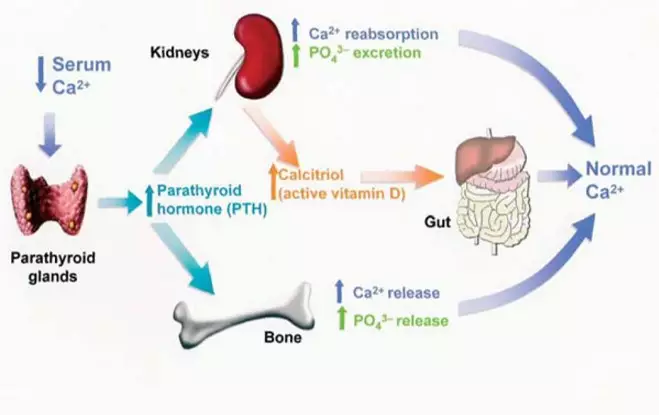Functions of kidney 6: vitamin D activation
What does the activation of vitamin D have to do with the kidneys? What is activated vitamin D? What does it do? Read on to find the answers to these questions and more.
What is vitamin D?
Vitamin D is a fat-soluble vitamin. It is found naturally in certain foods, though it can also be taken as a supplement. Vitamin D is also created from cholesterol in the skin by proteins called enzymes.
This is caused by UV light from the sun hitting the skin. Many people are deficient in vitamin D because they don’t spend enough time in the sun. This is particularly true of people who live further north, and those with darker skin tones.
What does Vitamin D do?
As well as being a vitamin, Vitamin D is hormone within the body. A hormone is simply a chemical the body makes to send a signal to another part of the body. Think of them as a bit like a letter with instructions for their target. Hormones are transported in the blood to their end destination.
Vitamin D performs its functions in the body by binding to a ‘receptor’ called the vitamin D receptor (VDR), which is found in nearly every tissue in the body.
One of vitamin D’s important roles is to help control the balance of calcium and phosphate in the body. It does this by acting on both the intestines and the kidneys, to increase absorption and reabsorption of both substances.
When calcium and phosphate levels are low, vitamin D production is increased to counter this issue. Calcium and phosphate are both key components of bones, helping them keep it strong and resistant to fractures. Calcium also has many other roles such as in nerve and muscle function.
Vitamin D plays another role in the bones as it regulates bone turnover. It does this by promoting a process called bone resorption. It stimulates cells called osteoclasts found in the bone, which act to break down the bone, releasing more calcium into the blood stream.
What role do the kidneys play in activating vitamin D?
Most of the vitamin D we obtain from our diet and create in our body, is in an ‘inactive’ (dormant) form (called cholecalciferol or vitamin D3). However, for our bodies to be able to use vitamin D, it must be in its ‘active’ form (also known as 1,25-dihydroxy vitamin D) – see diagram below. This requires several enzymes, such as ‘CYP27B1’ found in the kidney.
These enzymes alter the vitamin D, changing it to the active form. This happens in two steps, first in the liver and then the kidney.

Hence people with damaged kidneys (i.e. chronic kidney disease, CKD) are deficient in active vitamin D (1,25-dihydroxy vitamin D).
Click here to learn more about the functions of the kidneys.
What happens when the kidneys are damaged?
When the kidneys are damaged, they aren’t able to produce as much of the enzyme CYP27B1. This means less vitamin D is activated (strengthened) and so the level of calcium in the blood falls. If this is untreated for a long time, it can lead to damage to the weakening of the bones. This is due to renal bone disease.
There are other different causes of renal bone disease, not just lack of active vitamin D. Another issue that a low blood calcium leads to more parathyroid hormone (PTH) being produced by the parathyroid glands in the neck.
PTH is another hormone and also acts to increase blood calcium levels. It does this by activating the osteoclasts in the bone, leading to calcium being released from the bones. So if too much PTH is produced (as happens in CKD), this also contributes to bones weakening and the potential to fracture.

How the body initially responds to a low calcium in CKD, by increasing PTH production and attempting to activate more vitamin. Eventually active vitamin D levels fall.
Both the low vitamin D levels and high PTH can be largely corrected by taking vitamin D as a tablet.
Summary
We have described functions of kidney: vitamin D activation. I hope it has been helpful.
Other resources
Renal bone disease and CKD
Functions of kidneys 1: waste removal
Functions of kidney 2: fluid balance (also affects blood pressure)
Functions of kidney 3: acid-base balance
Functions of kidneys 4: blood pressure control (makes renin)
Functions of kidneys 5: anaemia, blood cells and EPO (makes erythropoietin)
Functions of kidney 7: making prostaglandins.
Watch this video to learn more about renal bone disease.
Last Reviewed on 18 June 2024
